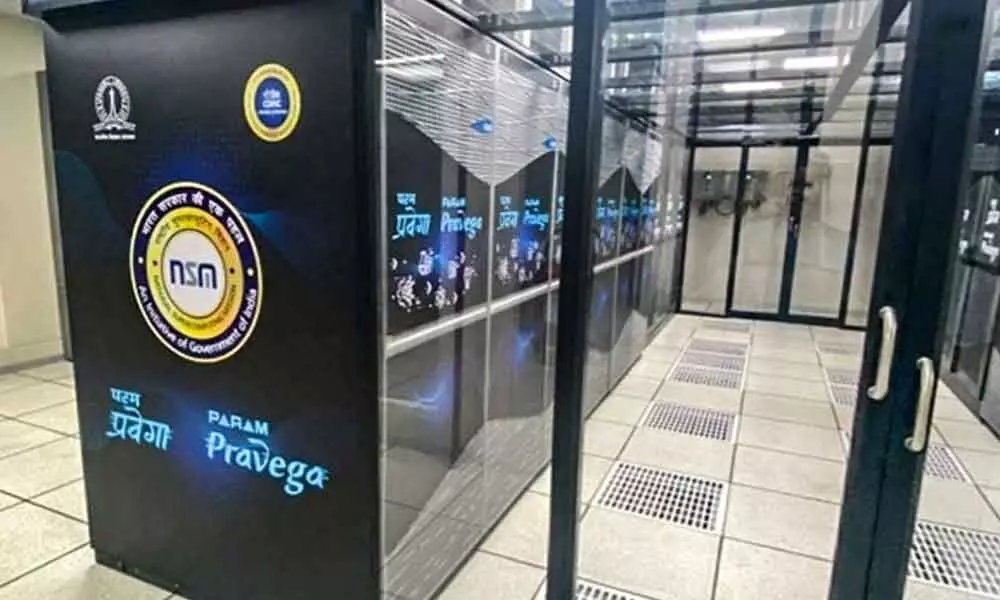IISc commissions country's most powerful supercomputer Param Pravega

IISc commissions country’s most powerful supercomputer Param Pravega
Under the National Supercomputing Mission (NSM), the Indian Institute of Science (IISc) has installed and commissioned Param Pravega, one of the most powerful supercomputers in the country, and the largest in an Indian academic institution.
Bengaluru: Under the National Supercomputing Mission (NSM), the Indian Institute of Science (IISc) has installed and commissioned Param Pravega, one of the most powerful supercomputers in the country, and the largest in an Indian academic institution.
The system, which is expected to power diverse research and educational pursuits, has a total supercomputing capacity of 3.3 petaflops (1 petaflop equals a quadrillion or 1015 operations per second). It has been designed by the Centre for Development of Advanced Computing (C-DAC).
A majority of the components used to build this system have been manufactured and assembled within the country, along with an indigenous software stack developed by C-DAC, in line with the Make in India initiative, according to press release by IISc.
NSM is steered jointly by the Department of Science and Technology (DST) and Ministry of Electronics and Information Technology (MeitY), and implemented by C-DAC and IISc. The Mission has supported the deployment of 10 supercomputer systems so far at IISc, IITs, IISER Pune, JNCASR, NABI-Mohali and C-DAC, with a cumulative computing power of 17 petaflops.
About 31,00,000 computational jobs have successfully been carried out by around 2,600 researchers across the country to date. These systems have greatly helped faculty members and students carry out major R&D activities, including developing platforms for genomics and drug discovery, studying urban environmental issues, establishing flood warning and prediction systems, and optimising telecom networks. The Param Pravega system at IISc is a mix of heterogeneous nodes, with Intel Xeon Cascade Lake processors for the CPU nodes and ANVIDIA Tesla V100 cardsAon the GPU nodes. The hardware consists of an ATOS BullSequana XH2000 series system, with a comprehensive peak compute power of 3.3 petaflops. The software stack on top of the hardware is provided and supported by C-DAC. The machine hosts an array of programme development tools, utilities, and libraries for developing and executingAHigh Performance Computing (HPC) applications.
IISc already has a cutting-edge supercomputing facility established several years ago. In 2015, the Institute procured and installed SahasraT, which was at that time the fastest supercomputer in the country. Faculty members and students have been using this facility to carry out research in various impactful and socially-relevant areas. These include research on Covid-19 and other infectious diseases, such as modelling viral entry and binding, studying interactions of proteins in bacterial and viral diseases, and designing new molecules with antibacterial and antiviral properties.
Researchers have also used the facility to simulate turbulent flows for green energy technologies, study climate change and associated impacts, analyse aircraft engines and hypersonic flight vehicles, and many other research activities. These efforts are expected to ramp up significantly with Param Pravega. IANS

















